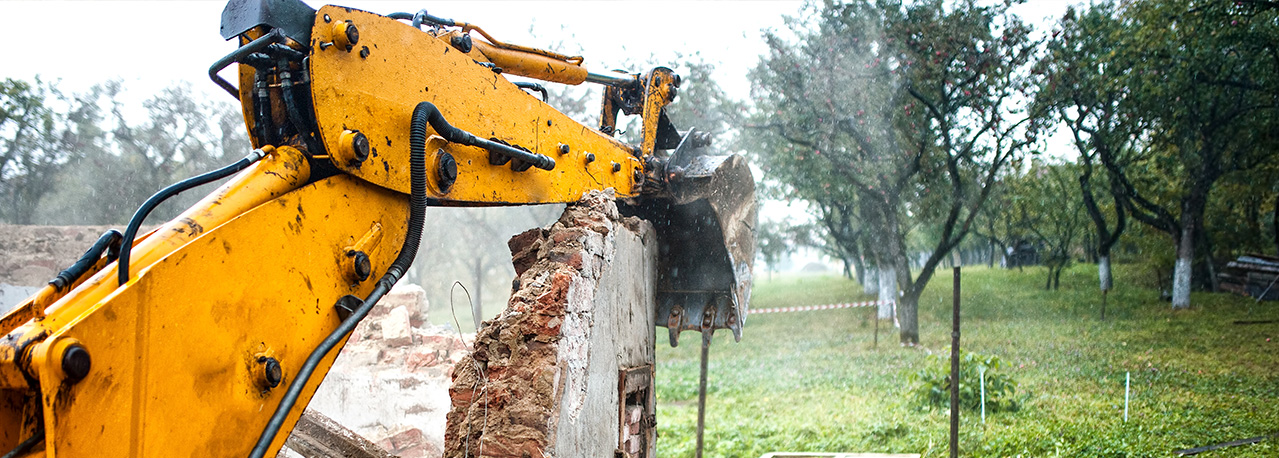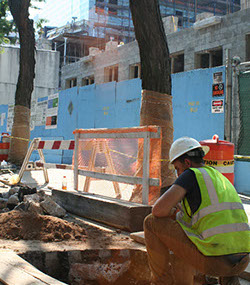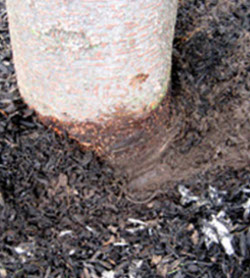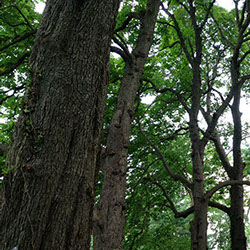
The science of preserving nature since 1964
Please contact us for a FREE Consultation


Consulting: Protecting Trees During Construction
Trees often suffer during construction, even though the goal is to preserve them to enhance the landscape...
Project managers often decide to work around trees during the building process. As a result, many trees are frequently damaged irreparably, creating eyesores as well as hazards. By working with your arborist and contractor(s) from the start, you can formulate a realistic tree preservation plan.

Proper fencing and protection can help prevent mechanical damage to tree trunks and roots.
All too often, our arborists are called out to a property to diagnose a declining tree problem only to discover the initial primary cause of the decline was a previous construction damage. Whether it is a new addition to the house, a repaved or new driveway or the construction of a new development community, the impact to trees is severe and commonly leads to death, usually several years after the construction was completed.
Consulting your Almstead arborist during the beginning planning stages, especially where you believe trees will be directly impacted, can help you look at the future construction in a completely new light.
Mechanical Damage
Bark and limbs are often damaged by construction equipment, weakening a tree's defenses. The damage predisposes the tree to invasion by decay organisms, typically various root rot diseases and borer insects. This type of damage is permanent and often leads to death. Everyone using equipment on site must be aware of the tree preservation goals.
Severed Roots
Tree roots extend outward much more than down into the soil. Severing roots close to the tree can reduce the nutrients the tree receives -- which can have a significant impact on a tree's survival. Fencing around trees must include the critical root zone (CRZ) — typically five times the trunk's diameter.

Severing tree roots during construction is especially dangerous because it eliminates the tree's anchor to the ground.
Compacted Soil
When soil is compacted it looses its capacity to retain oxygen and water in its pores: two critical elements needed in order for tree roots to survive. Practices like piling debris, driving heavy equipment and permitting temporary employee parking around trees all compress soil. Proper fencing and clear communication are key. Air Spading is beneficial to break up the soil after construction.
Change of Grade
The majority of tree roots are found in the top 6-12 inches of soil. Increasing grade on a site smothers the fine root hairs that absorb water and nutrients, and decreasing grade removes many of these root hairs altogether. A small, four inch change in either direction is all it takes to kill many trees. Options such as terracing should be considered. Air Spading and the right pruning can also help.

Changes in grade cause serious damage to the fine root hairs that trees depend on.
Increased Exposure
When wooded areas are converted into commercial or residential zones, select trees are often left to populate the area. However, many of these trees are not fit to stand alone without the protection of the now-vacant forest. Top heavy and susceptible to sun damage, these trees should not be selected to preserve in the first place.

Leaving select trees standing when developing a forested area increases those trees' exposure to the elements, often leading to potential risk down the road.
Irrigation and Drainage Issues
Newly placed drains and pathways rid the ground quickly of water that once soaked into the soil, exacerbating drought conditions for trees. Likewise, new irrigation systems can over-soak the ground, leading to root rot. Consult an arborist when planning drainage and irrigation systems.
Lower Westchester 914-576-0193 I Upper Westchester 914-741-1510 I Fairfield County, CT 203-348-4111 I Bergen & Passaic County, NJ 973-636-6711
Make a Payment I Careers at Almstead I Commercial Care I Tree Care I Lawn Care I Plant Health Care I Organic I Consulting I Nursery & Mulch I Insect Control I Newsletter I Contact Us
Copyright 2023 Almstead Tree, Shrub & Lawn Care Company I All rights reserved I Content on this site cannot be used without permission.


